Each month, the people who work in the libraries in the Ypsilanti Community Schools create a newsletter to share the work we’re doing in the building. This is my contribution:
The day I read A Rainbow of My Own in the Perry library, there was a lockdown at the school because of a nearby shooting that left one boy dead. The other boy came to Perry to hide in the parking lot.
I chose the story because it’s spring and it had been raining and murky recently, and the older I get the more annoyed and restless I become during this time of year – when change is supposed to have happened by now. When I want something different but I’m not sure exactly what that something is, or I do know and I’m not sure about how to go about getting it, or I know, but I’m not brave enough to do anything. Thinking about a little bit of color during these dreary, placeless days seemed nice.
The story, written by Don Freeman, is about a boy who sees a rainbow, tries to follow it, but those magical colors disappear, and the boy is left alone in the sunlight.
What if, the boy wonders, the rainbow comes out to play? What would happen? They would play tag, leap frog, and hide and seek. The rainbow would be terrible at hide and seek of course – its colors everywhere in the world – flowers, storefronts, people.
I was delighted by the idea of playing with a rainbow instead of gazing at it from afar, so I came up with a rainbow obstacle course. When the students came to the library, I told them rainbows have come to play and showed them the steps to the course: jump over rainbows, hop on them, sit in-between them (I thought I’d throw in a lesson on prepositions as well).
I read the story and then explained I thought it would be fun to make a rainbow of our own. On the tables in the library were piles of colored cereal, glue, and paper. I gave them no directions other than to dip the cereal in the glue carefully, and, despite how tempting it smelled, not to eat the cereal. I said nothing about design – whether their rainbow should be an arc, or some other shape – I wanted them to use the imagination within them. I wanted them to see what they could do with what they were given.
I think that’s the crux of it for me – I want to pass along a story, whether it’s a story I write or one I read, and I want people to take it and make it their own. I want that story to come out to play – bending and twisting, running and leaping with the reader and like the rainbow in Freeman’s book, I want to show that stories are here for the taking. Stories are always here, waiting to be taken with us.
That day, the day of the lockdown and of rainbows, it was sunny. Maybe it wasn’t the first sunny day, but it was one of the first – when jackets weren’t needed and shorts and dresses could be worn. It was an effervescent day – a day for basketball and hopscotch. A day for grilling hot dogs and maybe a bike ride to get ice-cream after dinner. It was a day when things seemed new, alive, awake.
As I normally do on my lunch break, I left Perry to get a coffee at Cultivate. I could write an entire essay on my love for that coffee and tap house and the good, creative work they are doing in the community. I go there in part to support them, in part to get caffeinated, but mostly to enter a place that feels like communion. For a small moment, it feels like there’s a joining together of talents in the hope that they will turn into offerings – all of us broken, all of us still willing to take what’s been broken and find a way to use it.
I think it was right around the time I was getting coffee that a boy was shot and killed, and I think it was right around the time that I parked my car in the Perry parking lot that the boy who shot him was also entering the parking lot. Minutes later, the administrative assistant declared over the intercom, “We are in lockdown. This is not a drill.”
I’ve taken ALICE training, but I’m certain there are a number of things I got wrong. I locked the library doors, and ran into the closet, shoved a desk behind the door, then ran into the closet’s inner room, and slammed that door. I think I was supposed to stay in the library so that if I needed to escape – or fight – I could. There’s no escaping if you’ve locked yourself in the closet.
The next thing I did was I thought of my children, Hadley and Harper. I wanted to see them. I wanted to go home to them. The cops who trained us said that from now on, every day we walk into the schools we work and teach in, we must be ready to make a decision about whether we’d save someone else’s kid or go home to our own. My answer came like an instinct – a need for water when I’m thirsty, the jerk of a hand away from a hot stove accidentally touched. There was no time to rationalize, to think things through – I wanted to see Hadley and Harper that day in training when the decision was hypothetical, and hunched and cowering in the closet, I wanted to see them when the decision was closer to reality.
The truth of what I know about myself now walks with me into YIES and Perry every day. It pops like a spark every time I hear the intercom click on. It floats alongside me as I help students find Mo Willems’ pigeon books, Pete the Cat, and Harry Potter. It stands in between a student as I reach to hand her the book she has been waiting for, and she reaches to take it.
The room I sat in during the lockdown had been turned into a Title 1 Reading Room. I’m not sure exactly what Title 1 means, but it is filled with books that I and another couple of teachers organized a couple of years ago. We slipped them into plastic bags, and then into red bins, and now, teachers can pull from these books for all kinds of studies.
I’m not a Reading Specialist, and I have no plans or interest in becoming one, so I know nothing about whether these books will help advance a student’s literacy capabilities. I do think though, that many of them are great stories: Zen Shorts, Yo! Yes, and The Invention of Hugo Cabret for example. There’s historical fiction and nonfiction and all of them are waiting and ready to be used, but that day, scared, and surrounded by the dark and those stories I thought, why weren’t these stories enough?
I’m not talking about the right to bear arms. I’m talking about the right to bear stories – both our own and others. I’m talking about arming children with stories small and mighty, large and quiet, stories that are hilarious and stories that are devastating. Stories that are ridiculous and imaginative – a cat who doesn’t worry what he steps in with his white shoes and what color they’ll change because no matter what, he’ll just keep walking along and singing his song, a hot dog loving pigeon who doesn’t want to go to sleep, who wants to drive a bus, who wants a puppy until he decides he’s afraid of dogs and the story changes, a boy whose parents have been killed and who has been locked underneath his aunt and uncles’ staircase, and who is the most powerful wizard in history. A rainbow that comes out to play on a day a boy needs a friend.
It is not my hope or desire for stories to make a difference. I expect them to. I do not want to lose my faith in stories.
I keep thinking of the boy that did the shooting, lying on the ground with his hands over his head as the cops inched near. Did he wake up on that bright blue morning knowing what he’d do? Did he believe he had to do it; that there was no other choice? What happens now?
What about the boy who was killed? What was his favorite color? His favorite food? Did he have a best friend? Why wasn’t he in school? Why aren’t we providing an education that is not just an escape, but an opportunity for a new perspective, and a future?
And now, the mothers. What about them? What were those phone calls like – the one that said a son has been arrested, and the one that said a son is no more. What story is there for that? What story is there for any of this? Where have we failed all of these people?
The truth is every day I go to work, I am a little afraid. Every day, while I work with other peoples’ children, I also think of my own. Every day I hope with trepidation a story I read or one a student reads will be one that becomes a part of him or her, and will help this person forge their way in the world.
I am scared for my life, and I believe in stories – two truths that will never match up. They will never go away.
They exist like rays of light shot forth from broken glass – twitching, shimmering, dancing – their color reflecting off everyone and everything in its path, ready to mark us.
We watch, both hopeful and terrified that we will be marked.
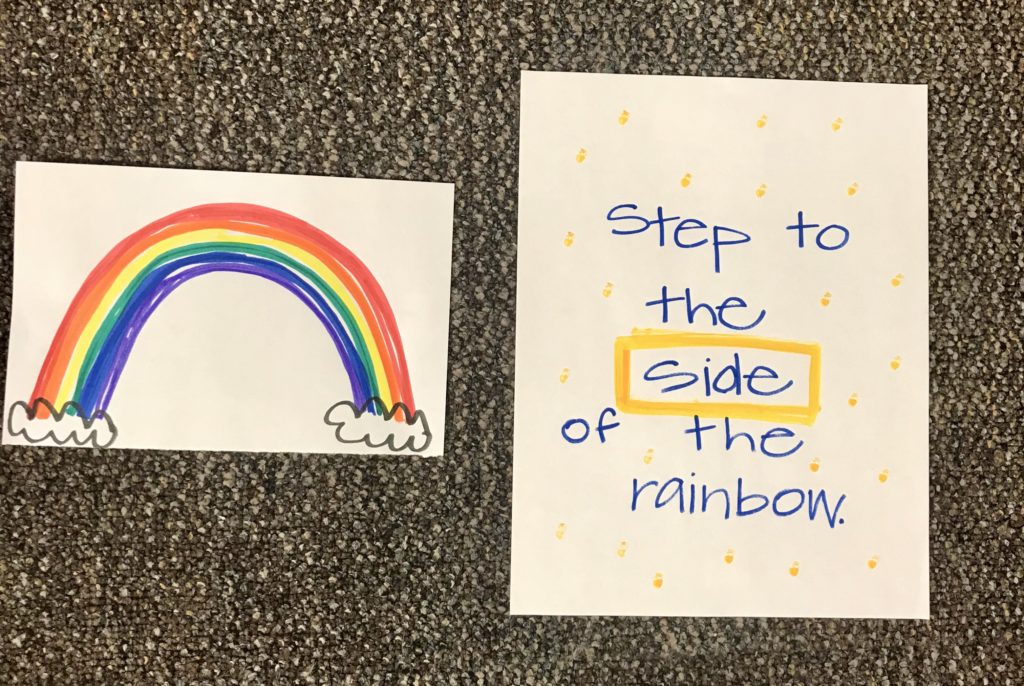
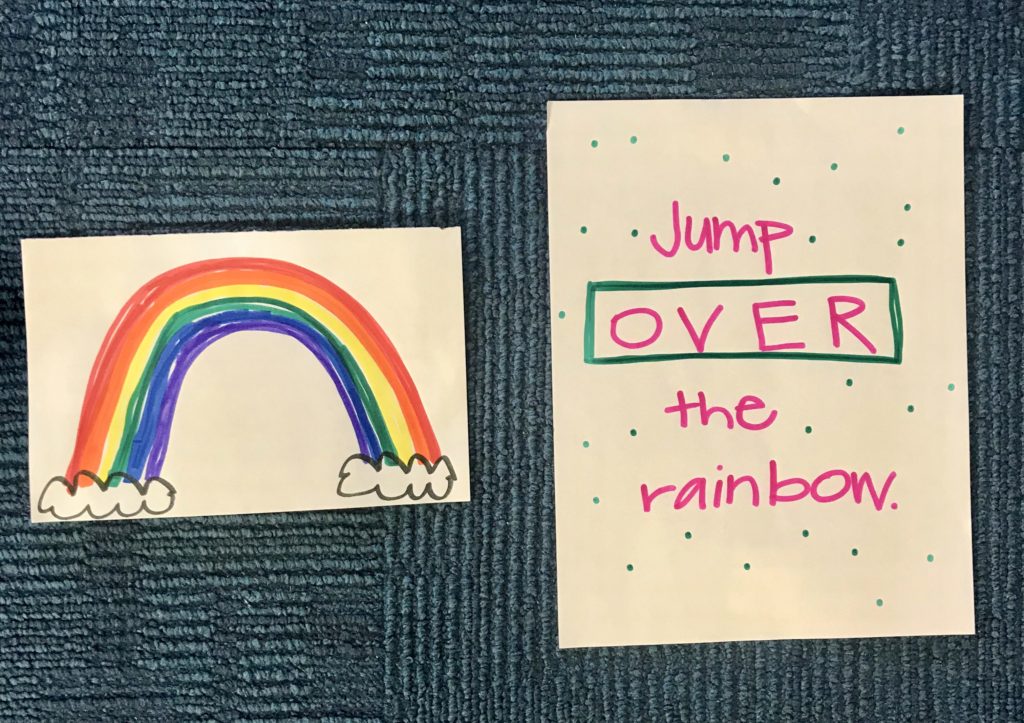
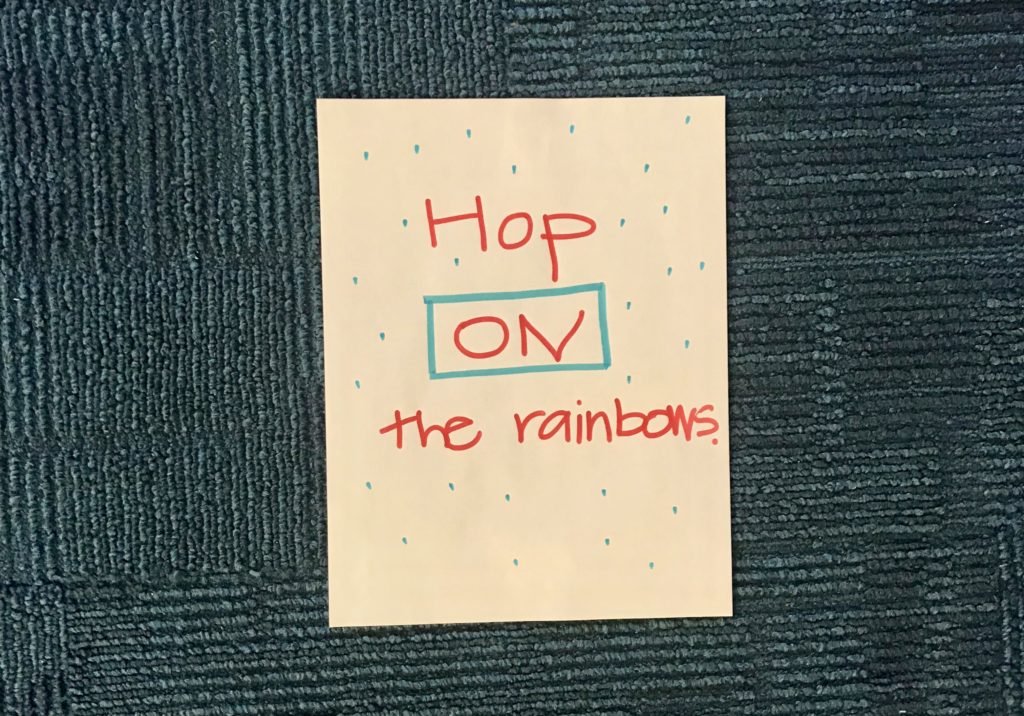

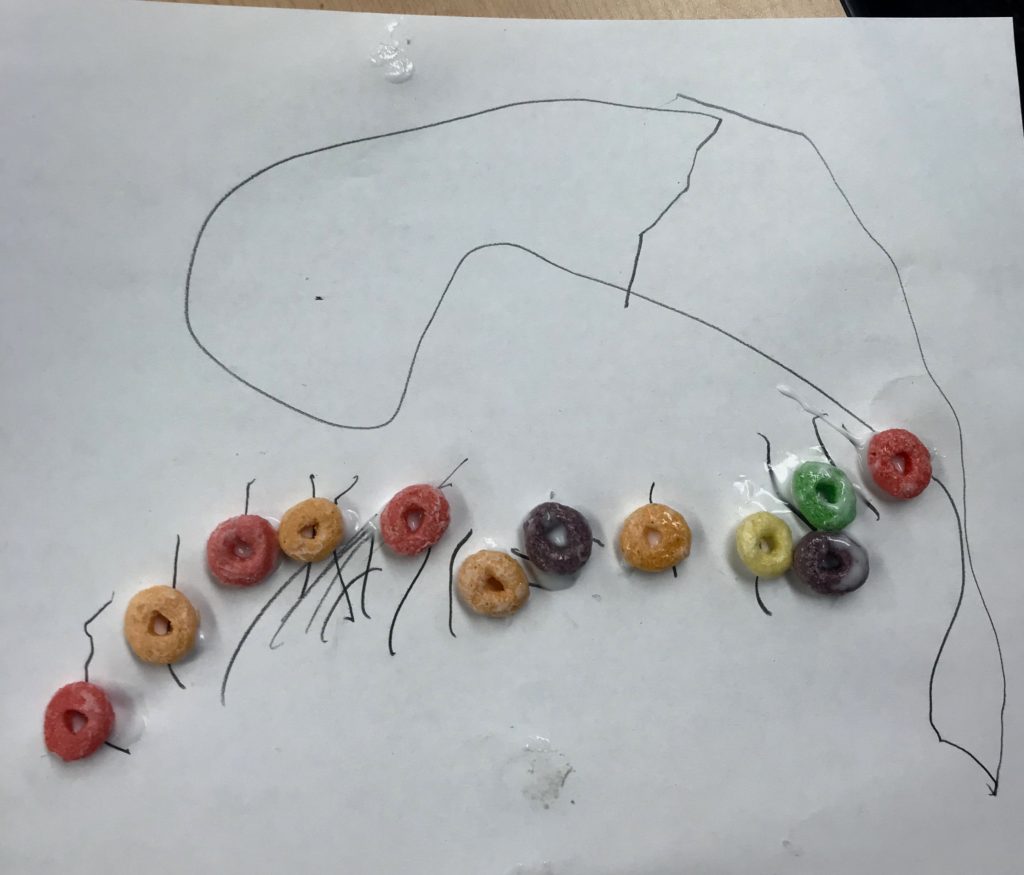
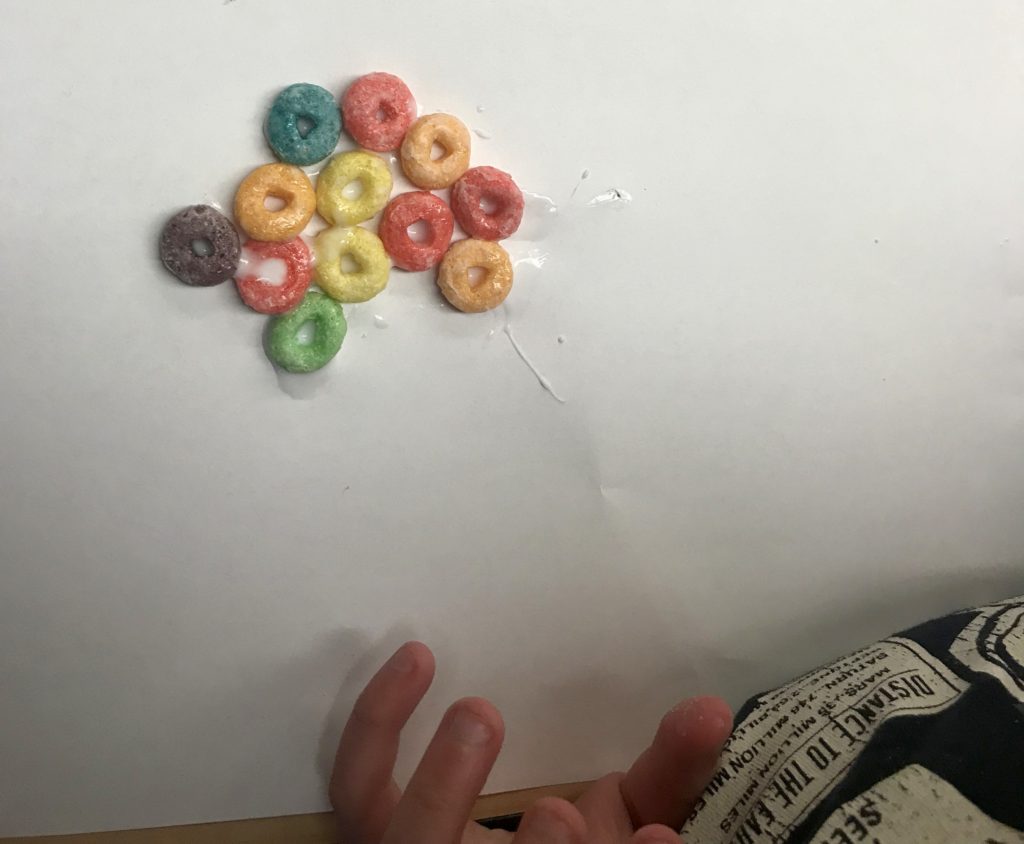
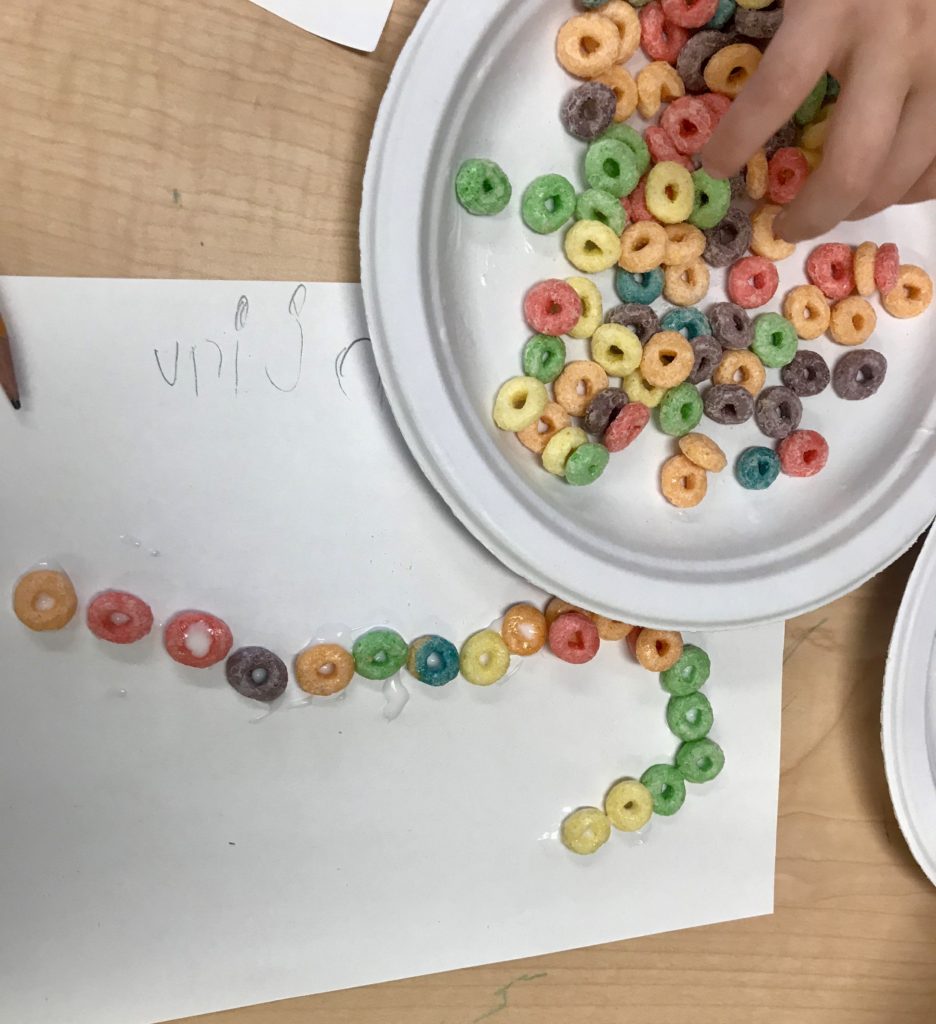
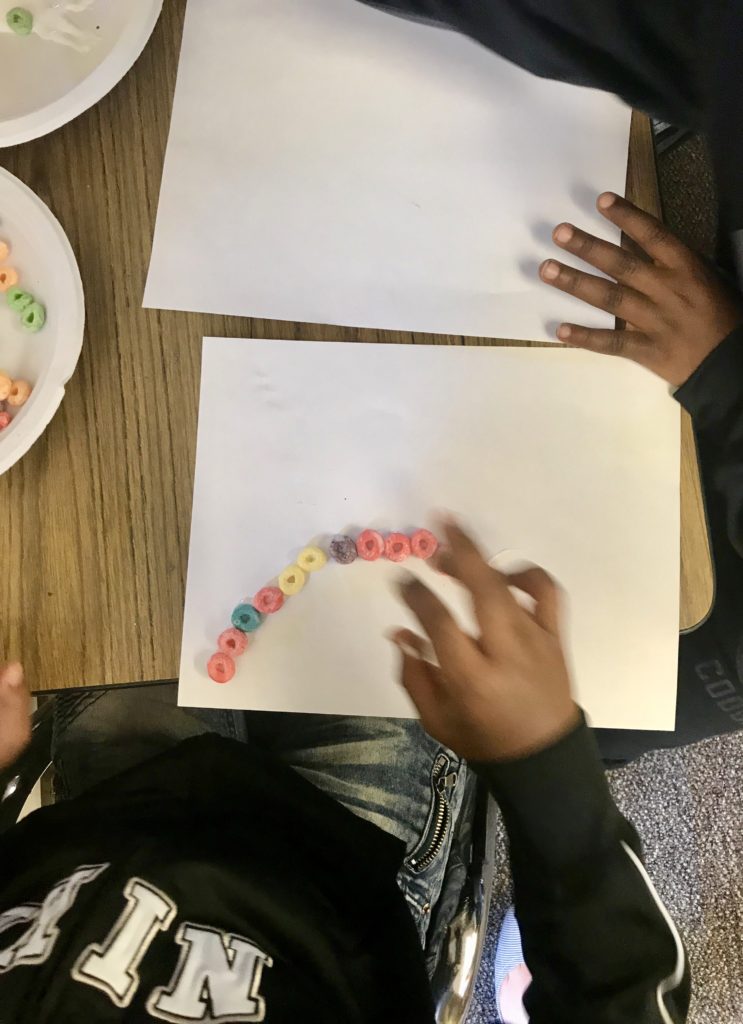
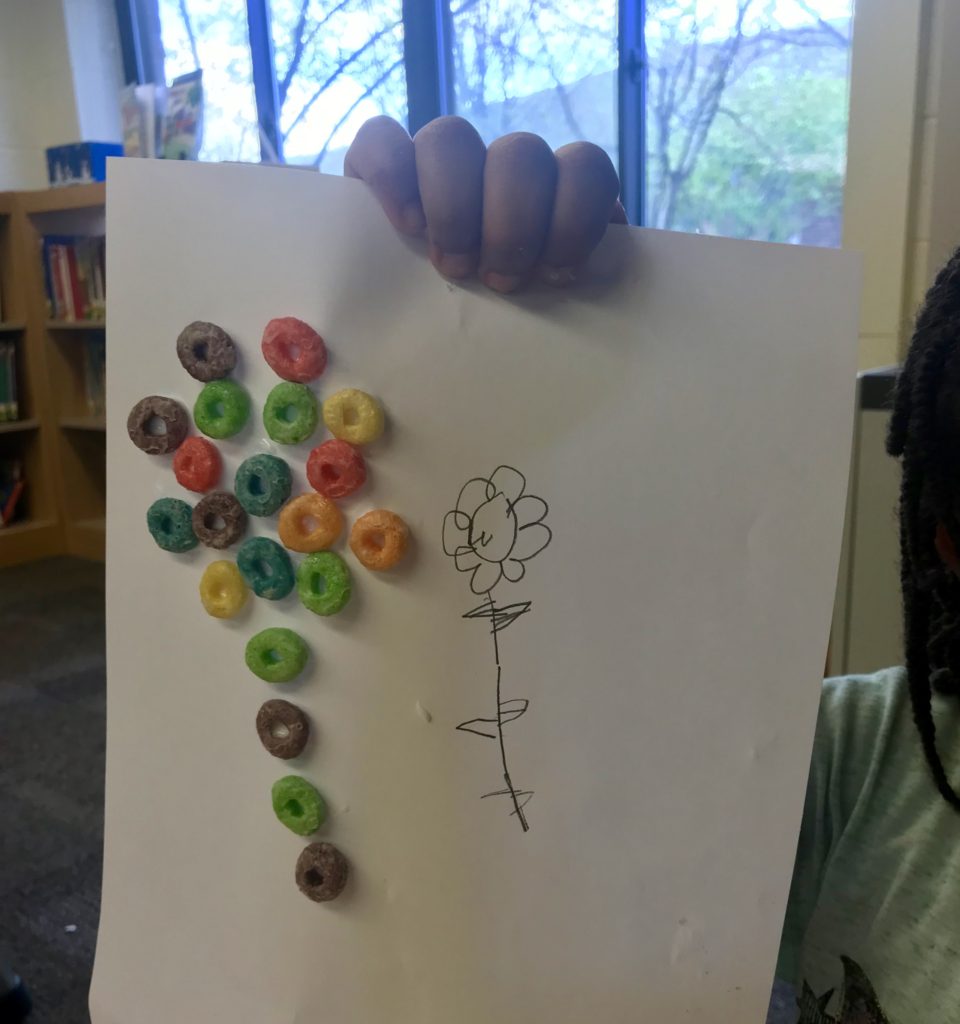

Beautiful and poignant, Callie. You have interpreted what many teachers face and feel in America today. I also love your lesson and plan on using it in my own teaching.
This is a beautiful essay. Living through the same lockdown, you captured a lot of what I’ve been feeling – but unable to articulate – ever since. Thank you for sharing this and for all your lovely lessons for our kiddos, not the least of which was the Rainbow Obstacle Course.